Traveling west to the lands of "The Quiet Man" to discover all that Mayo has to offer and explore the quirky wonder of Hiberno-English.
The town of Cong is situated at the northern edge of Connemara on a narrow strip of land between the waters of Lough Mask and Lough Corrib. During the summer days of the Gaelic Football season, county flags adorn the waysides – maroon and white for Galway up against the green and red of Mayo. The county border is never far away; it would be hard to find if it wasn’t for the flags. This is the front line of inter-county rivalry and the Connacht Championship is serious business in these parts.
I stayed in a wonderful bed and breakfast just beyond the town and was treated to a sumptuous “full Irish” amidst a clutter of ornaments and a gallery of family photos. The color scheme of the gates and gardens proclaimed this a Mayo house as did the matchday memories framed along the sideboard. I had more food than necessary but just enough to be polite; it would have been bad manners not to make some attempt to clear my plate.
Not long after I was on my way, heading roughly westward toward the coast. The day was perfect for cycling, with mottled clouds, a gentle breeze, and no sign of rain. This would be a slow trundle rather than a mad dash of a journey. And of course, my first stop was Cong itself - not to be missed by any visitor to these parts.
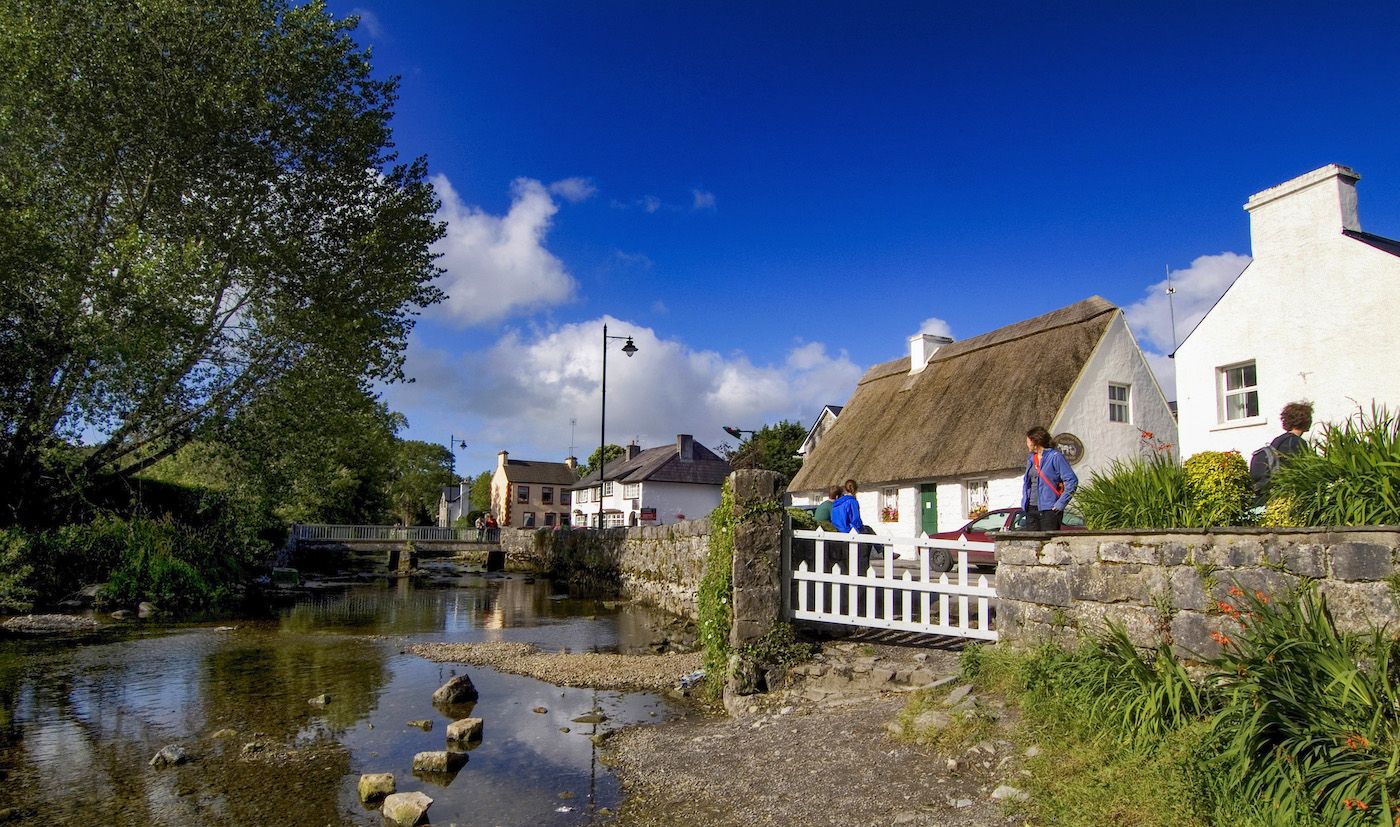
Cong, County Mayo.
Many people regard Cong’s Ashford Castle as the best hotel in Ireland. In my opinion, it is certainly the most splendid. For a small fee, it is possible to visit the picturesque gardens and extensive woodlands that surround the estate.
Many famous people stayed in the castle including three by the name of John – John Ford, John Wayne, and John Lennon. I should also mention Maureen O’Hara, Princess Grace of Monaco, and President Ronald Regan.
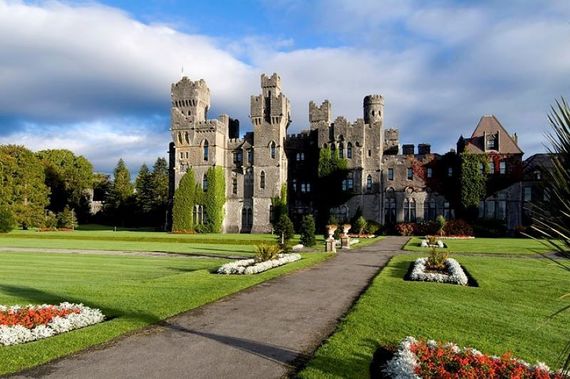
Ashford Castle, Cong, County Mayo.
And the film! Go on have a guess, if you haven’t twigged it by now the grounds of the castle were used extensively as the locations for John Ford’s cinematic masterpiece The Quiet Man. Still to this day, the town celebrates those heady days in the early 1950s when movie stars mingled in the streets and drank pints with the locals.
I sat on the bridge overlooking the Cong River, admiring the quiet patience of a heron as it watched for easy pickings from the lingering stream. Beautiful scenes always make me smile and I was lost in myself and my thoughts. It’s easy to see why this was the ideal location to portray a romantic vision of Ireland. The scenery is magical and there’s even a certain technicolor quality to the landscape surrounding the castle.
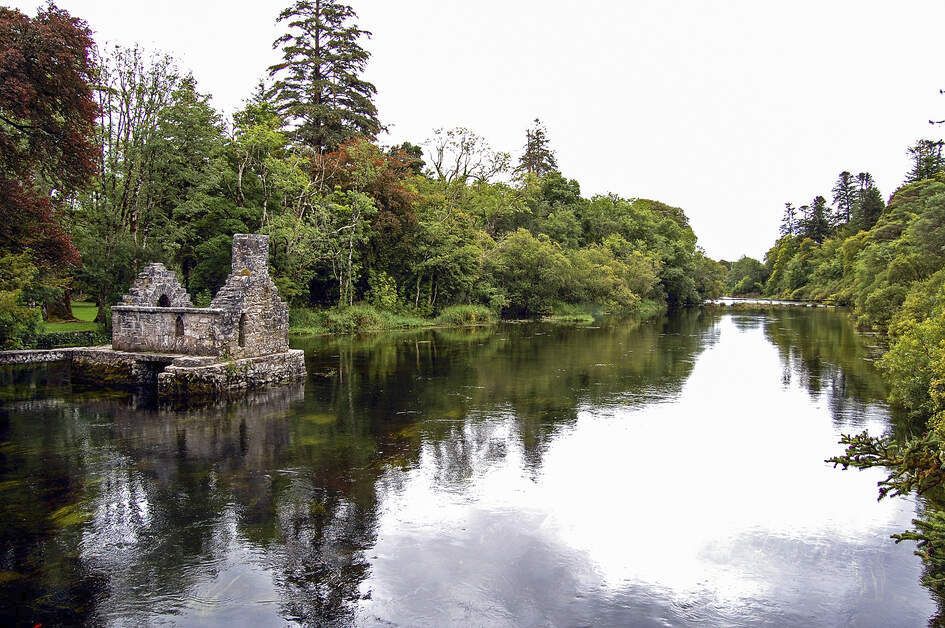
Monk's fishing house, in Cong, County Mayo.
“Do I know you?” The words startled me as I found a small man in a suit standing in front of me. “Do I know ye?” he repeated, taking his pipe out of his mouth for emphasis.
“Well I’m not sure …I wouldn’t be sure?” I answered apologetically. He stared back for several moments his features contorted as if trying to solve a great mystery.
“Your face rings a bell” he declared. Not a pleasant image! “You wouldn’t be an O’Malley from Cornmona? Would ye?” “No,” says I, much to his disappointment.
“Are you sure? Cause you look fierce like one of them?” He paused again, happy with my smile as a response. “Well so, I’ll be off with myself and wishing you well”. He slipped away along the riverbank.

Are you planning a vacation in Ireland? Looking for advice or want to share some great memories? Join our Irish travel Facebook group.
Later, as I cycled along the quiet roads, I thought about the encounter on the bridge and the way in which we Irish use our words. We often describe the dialogue from the film The Quiet Man as “stage Irish." The actor Barry Fitzgerald was a master at this. We like to think this is some kind of made-up way of speaking, especially when we hear it from others. In reality, it’s quite close and our quirky idioms are still in use in our everyday speech.
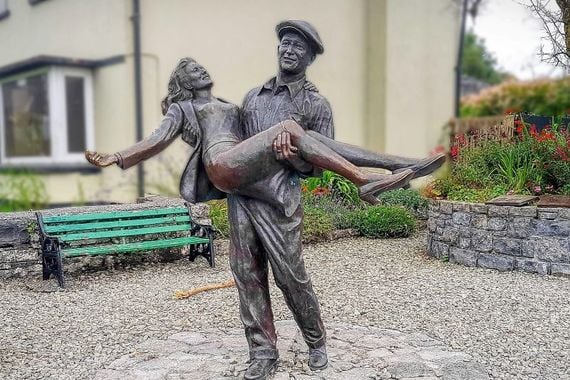
A statue of John Wayne and Maureen O'Hara, from the Quiet Man.
Much of the influence of so-called Hiberno-English comes from its direct reference to the Irish language. There is no word for “have” in Irish as in “I have cycled from Cong." We tend to use phrases like “I’m after cycling from Cong." This can sound odd to outsiders especially when it’s bundled in an expression like “Amn’t I only after closing the door with my key inside.” This might be followed up with “What kind of an eejitt am I?” If you need to decode that, imagine how it sounds to be called an “idiot” when your only language is Irish.
We certainly have a way with words. One of our favorite tricks is to pose questions in their negative form. At breakfast, the woman of the house asked “You wouldn’t like another cup of tea. Would you?” This particular way of asking questions also stems from Irish. There is no word that simply translates as “yes” in the Gaelic language. Instead, we use terms like “it is” or “I will” to signify agreement. So, the best way to pose a question would be to invite such a response. Wouldn’t it now?
My thoughts on the nature of our language accompanied me as I passed through Clonbur and headed out along the banks of Lough Mask. Just as the rambling county boundary leads to colorful displays of dual identity so too the flags of the past are still in evidence in our language.
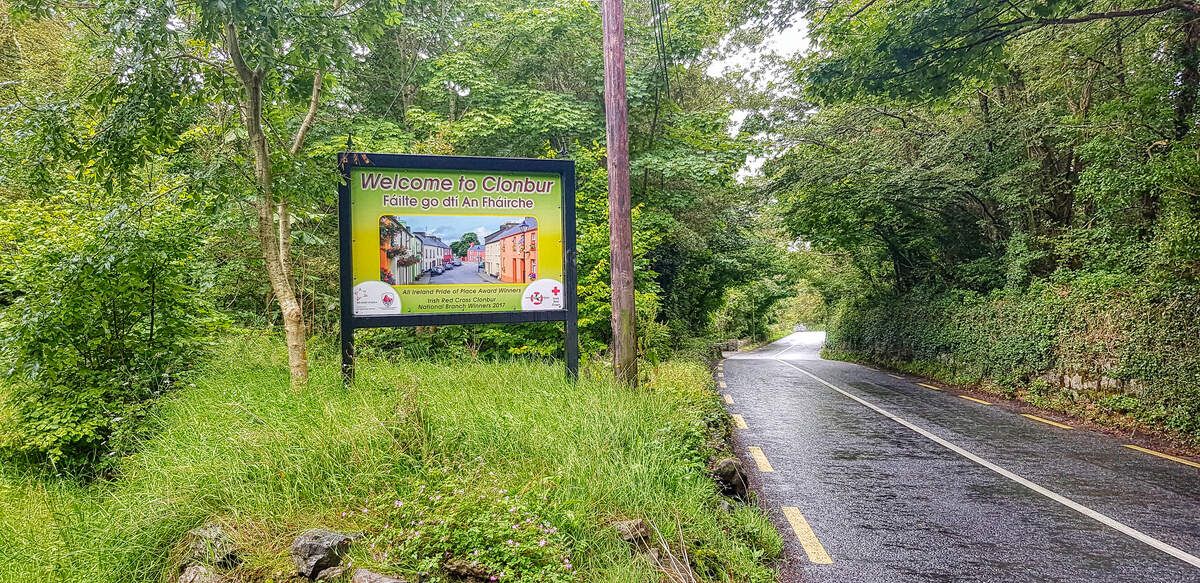
Entering Clonbur.
Not far from this area in the 19th century, there was a notorious landlord who was shunned by the locals on account of mistreating his tenants. The name of Boycott is still synonymous with the act of ostracising an individual.
As I cycled alone in the wonderful landscape my head was flooded with some of the words and phrases, we keep to ourselves. Fellow Dubliners might refer to country people as “culchies” which is a derivation from the Irish name given to Mayo town Kiltimagh. The favor would be returned with interest as the “jackeens who do be here of a summer are awful clots altogether”. There’s also the name of the town of Claremorris in Mayo, which some local wit appropriated as a love song to his darling muse Clare Morris!
Well, it wasn’t long before I was skirting the shores and admiring the magnificent views around Lough Na Fooey. If you ever decide to journey in these parts you should make it your business to seek out this lake. It’s a bit out of the way, the roads are quiet and narrow but the scenery is wonderful.
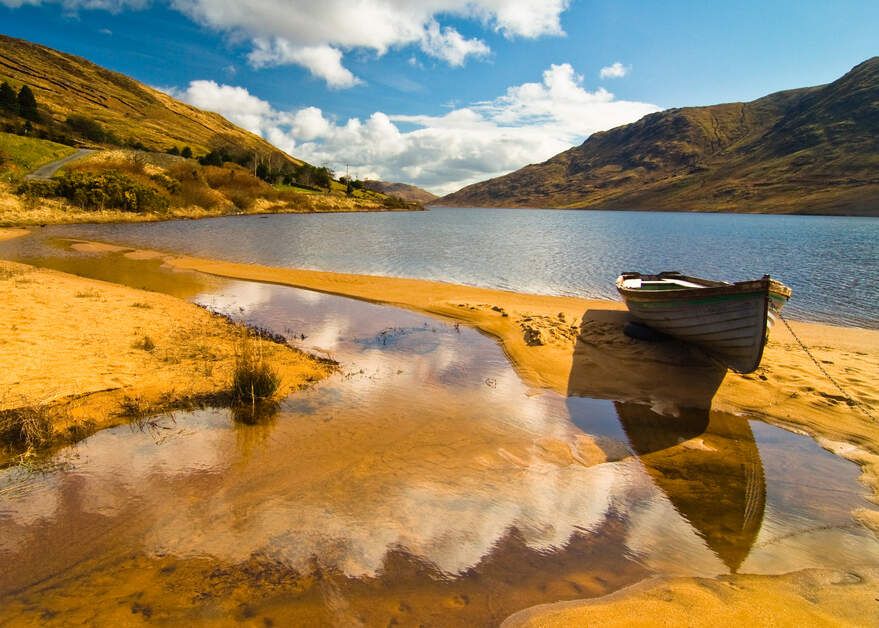
Lough Na Fooey.
At the end of the lake, there was a hill to climb and although it took some effort, the satisfaction of looking back along the mountains and the tranquil lake made it worthwhile. My journey onwards to Lennaun was just as pleasant. There’s a lot to be said for taking it slowly and thinking as you go.
One final thought about our language is our tendency to use reflexive terms such as I “often do myself”. A person might call to a house and ask, “is himself about?” This is a useful quality in a language as it's handy for inner dialogue and imagination. So, there I was again on the bridge in Cong, and I said, “Is that yourself Barry, the narrator from The Quiet Man?” “Well you’d be thinking that wouldn’t ye but then again you might be imagining it was me, myself, when it was you, yourself all along!”
*Originally published in Apr 2023, updated in Aug 2024.
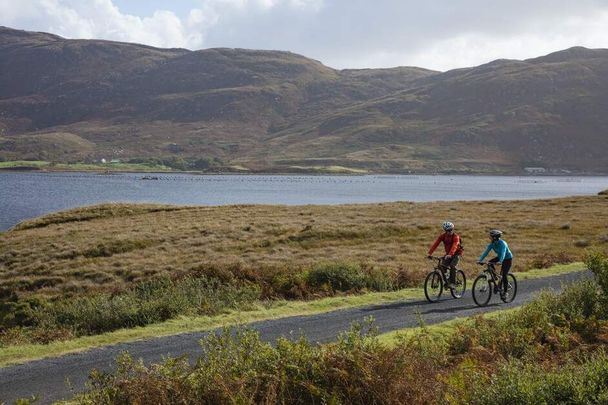


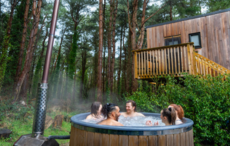
Comments